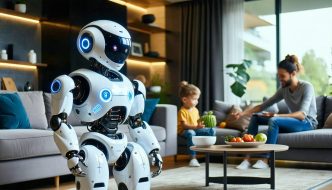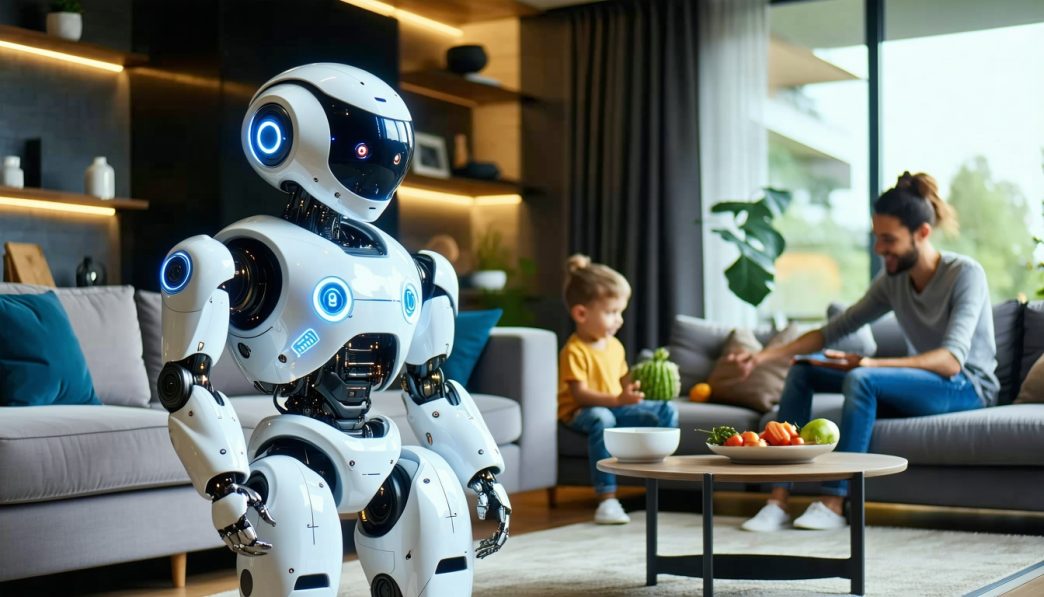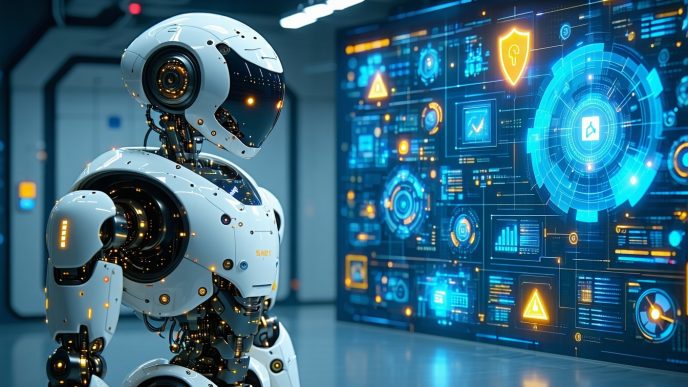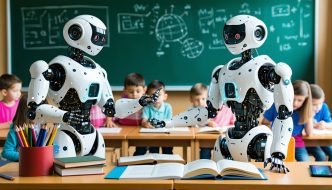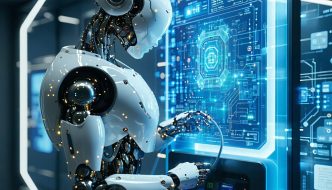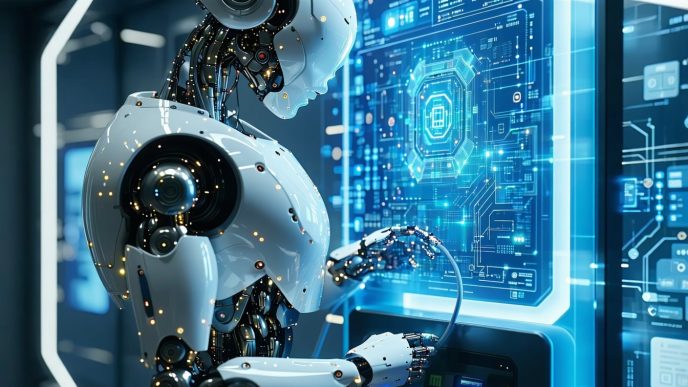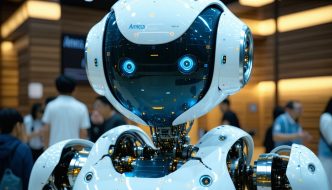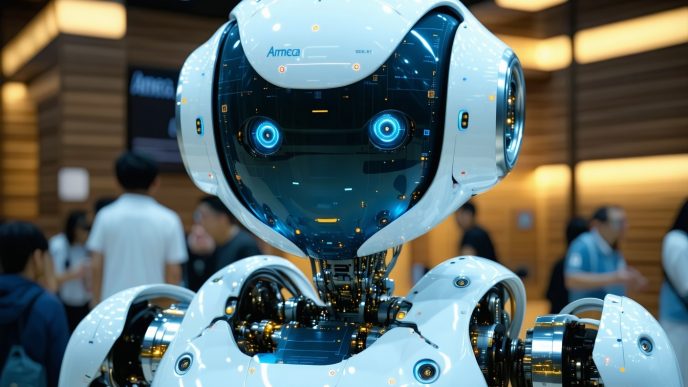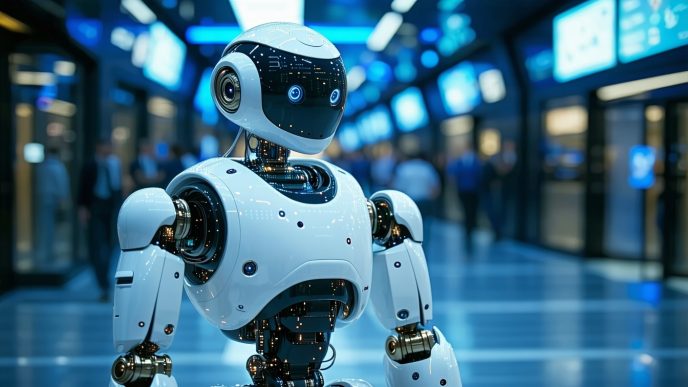Introduction to Humanoid Robots in Smart Homes
The integration of humanoid robots into smart home technology marks a significant evolution in how households function. These robots, designed to mimic human actions and interactions, offer a variety of applications that enhance everyday life. The rise of automation and intelligent systems has propelled the development and adoption of humanoid robots, making them increasingly common in modern homes.
Evolution of Robotics in Smart Home Technology
Initially, home automation relied heavily on simple systems designed for specific tasks, such as controlling lights or managing temperature. As technology advanced, more complex devices emerged, leading to the current landscape where integrated smart systems communicate seamlessly. The introduction of humanoid robots within this ecosystem represents a leap forward, offering functionalities that extend beyond mere automation.
The table below outlines key milestones in the evolution of robotics within the smart home domain:
| Year | Milestone | Description |
|---|---|---|
| 1990s | Basic Home Automation | Simple programmable systems for lights and security. |
| 2000s | Home Assistants | Introduction of voice-activated speakers and basic robotics. |
| 2010s | Advanced Smart Devices | Growth of IoT devices offering multi-device integration. |
| 2020s | Humanoid Robots | Merging AI and robotics to create interactive home assistants. |
Role of Humanoid Robots in Modern Smart Homes
In contemporary smart homes, humanoid robots play multiple roles that significantly improve the quality of life for residents. These robots are not only capable of performing household chores but also offer companionship, robust security features, and personalized assistance tailored to individual family needs.
Humanoid robots can manage tasks such as:
- Household Chores: Completing daily tasks like cleaning and cooking.
- Companionship: Providing social interaction and emotional support, especially for the elderly or those living alone.
- Monitoring: Enhancing home security by providing real-time surveillance and alerts.
As the functionality of humanoid robots expands, their integration into smart homes is likely to become more intricate, allowing for a smoother interaction between humans and technology. For more insights, explore our article on humanoid robots for home use.
The evolution and role of humanoid robots signify an important transformation in domestic technology, influencing how households will operate and thrive in the future.
Understanding Humanoid Robots
Humanoid robots represent a fascinating field of robotics, particularly in their applications within smart homes. They possess distinct characteristics and functionalities that make them suitable for various tasks and interactions in a household environment.
Characteristics of Humanoid Robots
Humanoid robots are designed to resemble humans in both appearance and behavior. Key characteristics include:
- Physical Form: These robots typically have a head, arms, and legs, mimicking human anatomy to facilitate tasks that require similar movements and interactions.
- Mobility: Advanced humanoid robots often utilize sophisticated locomotion systems that allow them to walk, navigate stairs, and traverse different surfaces. For more information on their movement capabilities, refer to our article on humanoid robot locomotion systems.
- Sensing Abilities: Equipped with various sensors, humanoid robots can perceive their environment, recognize objects, and interact with humans effectively. These sensors may include cameras, microphones, and touch sensors. More details can be found in our article on humanoid robot sensors.
- Artificial Intelligence: Many humanoid robots incorporate AI models to enhance their functionality. This allows them to learn from interactions and improve their responses over time. For insights into the AI technologies used, see our article on ai models in humanoid robots.
Functionalities of Humanoid Robots in Smart Homes
The functionalities of humanoid robots in smart homes extend beyond simple tasks. They can perform a wide range of functions, enhancing everyday life.
| Functionality | Description |
|---|---|
| Assistance | Humanoid robots can assist with daily chores and household tasks, such as cleaning and organizing. For more details on this aspect, see our article on humanoid robots for daily chores. |
| Companionship | These robots can provide companionship, especially for individuals in need of social interaction. Their ability to engage in conversation is explored further in our article on humanoid robots for companionship. |
| Security | Many humanoid robots are integrated into security systems, offering monitoring capabilities and alerting homeowners to potential threats. Explore more on this in our article on humanoid robots for security. |
| Education | Humanoid robots can also play a role in educational settings, providing interactive learning experiences for students of all ages. Read more about it in our article on humanoid robots for education. |
| Entertainment | They can entertain family members with games, music, and other interactive activities. This function highlights their versatility. |
By understanding the characteristics and functionalities of humanoid robots, one can appreciate their role in the evolving landscape of smart homes. Their integration into daily life leads to increased convenience and enhanced living environments. Further exploration of specific humanoid models such as the Sanctuary AI Phoenix or the Apptronik Apollo can shed light on how these robots are being utilized in real-world scenarios.
Benefits of Integrating Humanoid Robots
Humanoid robots present several advantages when integrated into smart home systems. These benefits range from enhancing automation and efficiency to improving security and monitoring capabilities.
Automation and Efficiency
The integration of humanoid robots into smart homes significantly boosts automation and operational efficiency. Equipped with advanced artificial intelligence and machine learning capabilities, these robots can handle a variety of tasks, streamlining household operations. For instance, they can automate routine chores such as cleaning, cooking, and managing household devices.
The following table outlines common household tasks that humanoid robots can automate:
| Household Task | Automation Capability |
|---|---|
| Cleaning | Yes |
| Grocery Shopping | Yes |
| Cooking | Yes |
| Laundry | Yes |
| Home Security Monitoring | Yes |
Humanoid robots can work alongside existing smart home technology, ensuring that tasks are completed efficiently and with minimal human intervention.
Personalization and Customization
Humanoid robots also offer a high degree of personalization and customization. Homeowners can program these robots to respond to individual preferences and routines, fostering a more comfortable living environment.
Features such as voice control and adaptable interfaces allow users to communicate specific desires, including preferred cooking styles or cleaning schedules. For more insight into the customization of humanoid robots, check out our article on humanoid robot customization.
The ability for these robots to learn from interactions enables them to adapt over time, creating a more tailored experience. Coverage of customized settings can include:
| Customization Feature | Description |
|---|---|
| Voice Recognition | Responds to user commands uniquely |
| Learning User Preferences | Adjusts tasks based on user feedback |
| Routine Scheduling | Programs tasks according to user habits |
Enhanced Security and Monitoring
Security is a paramount concern for many homeowners. Humanoid robots enhance home security by performing monitoring tasks and offering real-time alerts. With integrated sensors and cameras, these robots can detect unusual activities, monitor access points, and report back to homeowners.
Additionally, humanoid robots can be programmed to perform regular patrols, providing peace of mind when occupants are away. The benefits can be summarized in the table below:
| Security Feature | Functionality |
|---|---|
| Motion Detection | Alerts homeowners of movement |
| Remote Monitoring | Offers live feed access via app |
| Surveillance Patrols | Conducts regular patrols around the home |
These attributes make humanoid robots valuable allies in maintaining a safe living space while integrating seamlessly into the broader smart home ecosystem.
Challenges of Humanoid Robots in Smart Homes
Integrating humanoid robots into smart homes brings various benefits, but it also comes with significant challenges. Understanding these obstacles is crucial for maximizing the advantages of humanoid robots in residential environments.
Privacy Concerns
One of the foremost challenges with humanoid robots in smart homes is the potential invasion of privacy. These robots often come equipped with cameras and microphones designed to assist with various tasks. However, this data collection can raise concerns about surveillance and the unauthorized sharing of personal information.
Homeowners must consider the implications of allowing such devices to gather information about their daily routines. Data security measures are essential in ensuring that personal information remains confidential. The conversation around humanoid robots and privacy emphasizes the importance of responsible data management.
Integration with Existing Smart Home Systems
Another hurdle is the seamless integration of humanoid robots with existing smart home systems. Many homes already utilize a range of devices connected through different platforms. Ensuring that humanoid robots can communicate effectively with these devices is critical for optimal performance.
Compatibility issues may arise when trying to link robots to various smart home ecosystems. Specific standards and protocols must be followed for successful integration. A table below outlines common equipment and their compatibility challenges.
| Device Type | Compatibility Issues |
|---|---|
| Smart lighting systems | Varying protocols (Zigbee, Z-Wave) |
| Security systems | Different communication ranges or encryption standards |
| Thermostats | Firmware updates may be needed for communication |
| Smart speakers | Voice interface integration can vary |
Cost and Accessibility
The cost of humanoid robots poses a significant challenge for widespread adoption in smart homes. While the technology has advanced, humanoid robots remain expensive, making them less accessible for average consumers.
Additionally, ongoing maintenance and support options can add to the overall costs. Homeowners must also consider the value that these robots will bring to their households, weighing the benefits against the expenses. Information on humanoid robot costs can provide insights into pricing structures.
A comparison of initial costs versus long-term savings from automation might be helpful for potential users:
| Cost Category | Initial Investment | Long-Term Savings |
|---|---|---|
| Humanoid Robot | $1,000 – $10,000 | Reduced labor costs |
| Maintenance and Software | $100 – $500 per year | Possible reduction in service calls |
Addressing these challenges is imperative for the successful integration of humanoid robots into the smart home ecosystem. Homeowners should remain informed about the implications and navigate these hurdles to enhance their living spaces efficiently.
Applications of Humanoid Robots in Smart Homes
Humanoid robots have a variety of applications in smart homes, enhancing convenience and efficiency. These multifunctional devices are designed to address everyday needs, making them appealing for users seeking assistance in their households.
Assistant and Companion Roles
One of the primary roles of humanoid robots is serving as assistants and companions. They can engage in conversations, provide reminders, and help manage daily schedules. This interaction not only promotes companionship for individuals living alone but also assists families in organizing their routines.
Table 1 below summarizes the key functionalities of humanoid robots in assistant roles:
| Functionality | Description |
|---|---|
| Conversation | Engaging users with natural dialogue |
| Scheduling Help | Managing calendars and reminders |
| Virtual Presence | Offering companionship through AI |
For more information on how these robots enhance companionship, see our article on humanoid robots for companionship.
Household Tasks and Chores
Humanoid robots are also capable of performing various household tasks and chores. They can assist with cleaning, food preparation, and even laundry, streamlining daily activities. Some advanced models incorporate machine learning capabilities, allowing them to adapt to home environments and improve task performance over time.
Here are some common tasks humanoid robots can perform:
| Household Task | Description |
|---|---|
| Cleaning | Vacuuming, dusting, and mopping |
| Food Preparation | Chopping, cooking, and serving meals |
| Laundry | Sorting, washing, and folding clothes |
To explore how humanoid robots can aid with daily chores, visit our article on humanoid robots for daily chores.
Entertainment and Education
Humanoid robots also play a significant role in entertainment and education. They can provide interactive learning experiences for children, assist with homework, and offer entertainment through games and storytelling. Their ability to engage users in a fun and informative manner makes them valuable educational tools.
Table 3 below lists different educational and entertainment applications of humanoid robots:
| Application | Description |
|---|---|
| Interactive Learning | Assisting with educational content |
| Storytelling | Reciting stories and fables |
| Gaming | Engaging users in interactive games |
For further insights into how humanoid robots are enhancing education, check our article on humanoid robots for education.
Through these varied applications, humanoid robots are becoming integral to the smart home ecosystem, providing support, companionship, and entertainment while efficiently managing household responsibilities.
Future Trends in Humanoid Robots for Smart Homes
The future of humanoid robots in smart homes looks promising, with several advancements on the horizon that could greatly enhance their utility and integration into daily life. This section will explore key trends, including advancements in artificial intelligence, integration with the Internet of Things (IoT), and the potential impact on daily life.
Advancements in Artificial Intelligence
The evolution of artificial intelligence (AI) technology is a significant catalyst for the improvement of humanoid robots. Advancements in AI enable these robots to learn from their environments, adapt to the preferences of their users, and provide more personalized interactions. As AI models become more sophisticated, humanoid robots will have better capabilities in understanding human emotions and responding accordingly, improving companionship and support roles.
| AI Development Area | Description |
|---|---|
| Emotion Recognition | Robots will utilize AI models to identify and react to human emotions, enhancing interaction quality. |
| Learning Algorithms | Advanced algorithms will allow robots to learn from user preferences over time, improving efficiency and personalization. |
| Voice Interfaces | Improved voice interfaces will enable seamless communication, allowing for natural conversation and commands. |
For more information on how AI plays a role in humanoid robots, check our article on AI models in humanoid robots.
Integration with Internet of Things (IoT)
The melding of humanoid robots with the Internet of Things continues to evolve. As smart home ecosystems expand, humanoid robots can serve as central hubs that manage and control various connected devices. This integration will facilitate enhanced automation and smart living environments, where routines can be programmed and executed smoothly.
Benefits of IoT Integration:
| Integration Feature | Benefits |
|---|---|
| Home Automation | Humanoid robots can automate tasks such as lighting, heating, and security systems, optimizing energy usage. |
| Interconnectedness | Robots will operate various home devices in coordination with users’ schedules and preferences. |
| Enhanced Monitoring | They can provide real-time feedback for households, ensuring systems are functioning efficiently. |
To understand more about IoT’s influence on humanoid robots, explore our piece on humanoid robots and edge computing.
Potential Impact on Daily Life
The incorporation of humanoid robots into smart homes is poised to have a profound influence on daily living. These robots will not only assist in household chores but also provide companionship and interaction for family members. Their ability to engage socially can significantly benefit elderly individuals and those living alone, fostering a sense of presence and companionship.
Impacts on Daily Life:
| Daily Life Aspect | Potential Impact |
|---|---|
| Enhanced Productivity | Automation of tasks will free up time for family activities and personal interests. |
| Improved Elder Care | Humanoid robots can assist in elder care, providing reminders for medication and daily activities. |
| Emotional Support | By serving as companions, humanoid robots can reduce feelings of loneliness and enhance overall well-being. |
For insights into the application of humanoid robots in elder care, visit our article on humanoid robots in elder care.
The future of humanoid robots in smart homes is bright, as advancements in AI and integration with smart technologies pave the way for more intelligent, user-friendly, and effective robotic companions.
Considerations for Choosing a Humanoid Robot
Selecting the right humanoid robot for a smart home involves several key considerations. These include compatibility with existing smart home devices, programming and control features, and maintenance and support options.
Compatibility with Smart Home Devices
One of the most significant factors in choosing a humanoid robot is its compatibility with other smart home devices. A robot that seamlessly integrates into a smart home ecosystem enhances functionality and user experience.
When assessing compatibility, users should consider:
| Compatibility Aspect | Considerations |
|---|---|
| Smart Home Protocols | Does the robot support common protocols like Zigbee, Z-Wave, or Wi-Fi? |
| Device Syncing | Can the robot easily connect with different devices such as smart lights, thermostats, and security cameras? |
| Application Integration | Is there an app that allows for centralized control of the robot alongside other smart home devices? |
Ensuring these factors align with existing systems is crucial for a cohesive smart home environment. To learn more about integrations, you can check our article on humanoid robots for home use.
Programming and Control Features
The programming and control features of a humanoid robot determine how users will interact with and utilize the robot in daily life. Important aspects to evaluate include:
| Feature Type | Description |
|---|---|
| User Interface | Is the interface intuitive and user-friendly? |
| Voice Commands | Does the robot respond to voice commands for ease of use? Check out our article on voice interfaces in humanoid robots. |
| Customization Options | Can the user personalize functions or routines according to preferences? |
These features enhance the robot’s practicality and increase user satisfaction in a smart home setting. For a deeper dive into programming capabilities, see our article on humanoid robots and remote work.
Maintenance and Support Options
Regular maintenance and robust support options are essential for the longevity of humanoid robots. Users should consider:
| Maintenance Aspect | Key Points |
|---|---|
| Maintenance Schedule | Are there recommended maintenance schedules to follow? |
| Technical Support | Is there reliable customer service or technical support available? |
| Software Updates | Will the robot receive regular updates to improve functionality and security? |
A humanoid robot’s effectiveness can significantly diminish without proper maintenance and support. For more information on upkeep, refer to our article on humanoid robot maintenance.
By carefully evaluating these considerations, users can select a humanoid robot that not only fits their needs but also enriches their smart home experience.
